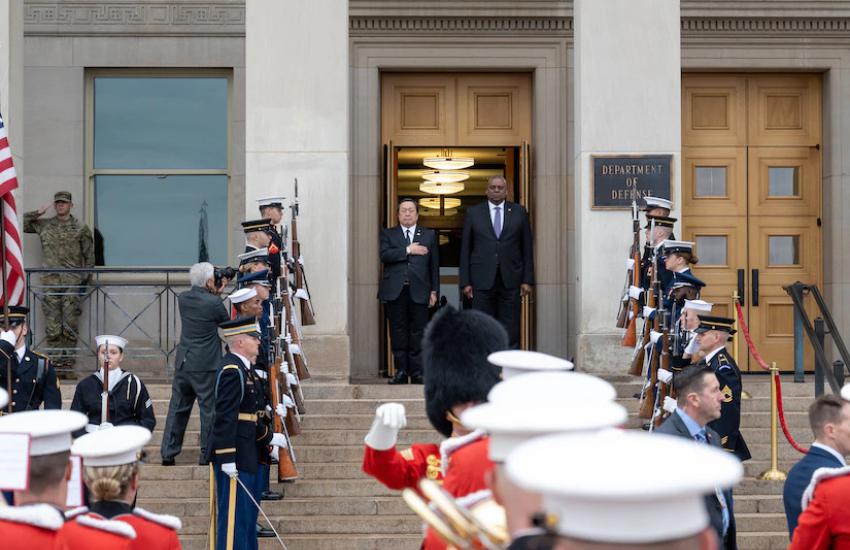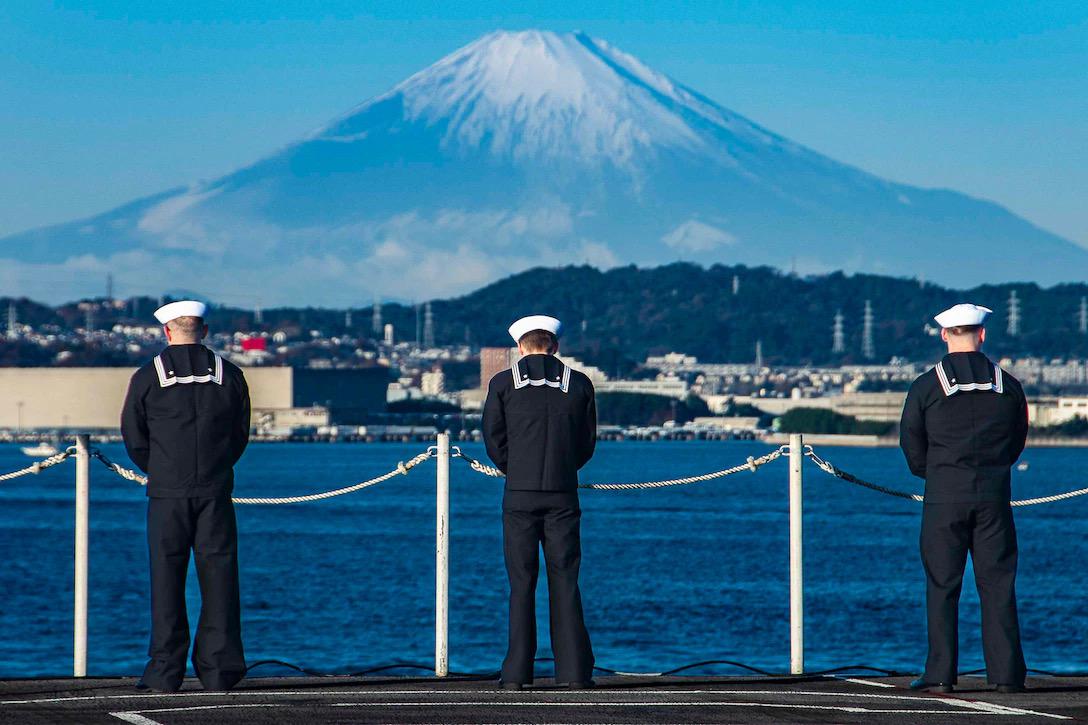U.S. Leaders Forge New Agreements With Japan's Top Officials
Officials from the United States Department of State and Department of Defense (DoD) met this week with top leaders from Japan, including their Minister of Foreign Affairs Yoshimasa Hayashi and Minister of Defense (MOD) Yasukazu Hamada. In addition to the U.S.-Japan 2+2 Security Consultative Committee Meeting, the so-called 2+2 meeting on January 11, U.S. Secretary of Defense Lloyd Austin hosted a bilateral meeting with MOD Hamada, resulting in two new agreements between the countries’ militaries: a bilateral Research, Development, Test, and Evaluation Memorandum of Understanding (MOU) and a bilateral, non-binding Security of Supply Arrangement (SOSA) between the DoD and Japanese Ministry of Defense.
Overall, the U.S./Japan 2+2 meetings were meant to modernize the long-standing partnership between the two countries, creating an updated “shared vision of an alliance” that will meet “the challenges in the Indo-Pacific region and around the world,” Pentagon spokesman Brig. Gen. Patrick Ryder, USAF, explained to reporters during briefings leading up to the 2+2 and bilateral events.
Hamada began his role as MOD in August and made the United States his first overseas trip in mid-September. Japan is rebuilding its leadership following the shocking assassination five months ago of their prime minister, Shinzo Abe, on August 10, 2022. Abe, the longest-serving prime minister in Japanese history, had taken a more active role to shape the Indo-Pacific region, supported the military and worked to strengthen ties with Australia, the United States and other countries, and supported his military.
“Expressing full support for Japan’s 2022 National Security Strategy, National Defense Strategy, and Defense Buildup Program, Secretary Austin welcomed Japan’s decision to strengthen its defense, including in its Southwest Islands, and to acquire counterstrike capabilities,” said a January 12 statement from Gen. Ryder about the bilateral meeting. “The two leaders reaffirmed the necessity of optimizing Alliance force posture and enhancing our response capabilities through readjustments in the laydown of U.S. forces in Japan, in accordance with the basic tenets of the 2012 Realignment Plan.”

In addition to the “historic step” of positioning the U.S. Marine Corps’ 12th Marine Littoral Regiment in Japan by 2025—that will provide advanced intelligence, surveillance and reconnaissance; anti-ship; and transportation capabilities; and conduct “associated posture initiatives”—the United States military announced it will collaborate with Japan on “emerging technology to improve defense capabilities,” in particular, focusing on “high-power microwaves, autonomous systems, and counter-hypersonics.”
“They welcomed increased co-development opportunities and supply chain security cooperation with the signing of the [MOU] for Research, Development, Test and Evaluation Projects and the [SOSA],” the Pentagon spokesman said. “Both leaders reaffirmed the strategic alignment between the United States and Japan, as well as our shared goals to modernize the Alliance, bolster integrated deterrence, and ensure a free and open Indo-Pacific region in collaboration with like-minded partners.”
The MOU also updates the Project for Cooperative Research agreement “to simplify processes as well as adjust for current laws, policies, and standards of practice for United States-Japan for RDT&E activities,” according to the DoD.
“Secretary Austin underscored the unwavering U.S. commitment to the defense of Japan, including U.S. extended deterrence provided by the full range of conventional and nuclear capabilities,” Gen. Ryder said. “The Ministers affirmed that the Alliance is stalwart in the face of challenges and steadfast in support for shared democratic values and norms that underpin the rules-based international order.”




Comments